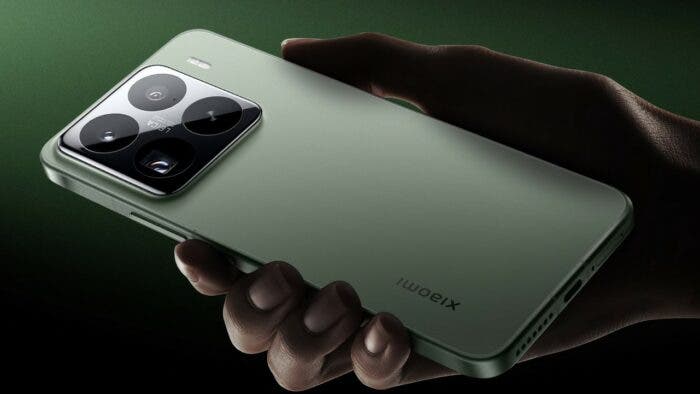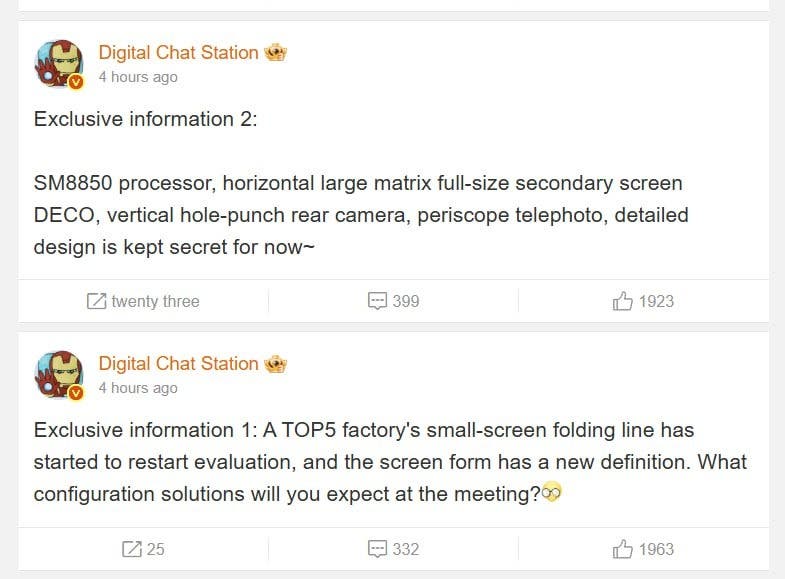newsXiaomi
Xiaomi’s Mysterious Q200 Could Be the Real Star of the Xiaomi 16 Launch

Nick Papanikolopoulos
July 11, 2025

So, here we are again. Another Xiaomi launch event is on the horizon, and once more, it’s not just about what we expect to see—but what we didn’t. Yes, the Xiaomi 16 series is coming. That much is certain. But quietly embedded within the upcoming release cycle is something different. A new device. One you probably haven’t heard about yet unless you’re the kind of person who checks MIUI source code for fun. It’s called the Q200. Or, at least, that’s its internal name. Codename: “Pandora.” And frankly, it’s caught our attention.

A Dual-Screen Return? Maybe. Maybe More.
At first glance, the Q200 seems like a side note. A model number—25098PN5AC—buried beneath the hype of the Xiaomi 16 Ultra and its rumored satellite communication features. But a closer look suggests it’s more than just another variation. It might actually be the next step in Xiaomi’s premium-tier playbook. Why? Because of one word: dual-screen.

Not seen since the Xiaomi 11 Ultra’s ambitious secondary display on the back, this design approach has been quiet—maybe even abandoned—until now. But “Pandora” could signal its return, this time in a more refined, perhaps more purpose-driven form. Details are sparse, sure, but the Mi Code entries don’t lie: subscreen hooks, system-level tweaks for multi-display behavior. Something’s brewing.
Timing, Strategy, and the “China-First” Playbook
According to current timelines, Q200 is expected to launch this September, right alongside the Xiaomi 16 series. That’s not a coincidence. Xiaomi has a habit of dropping experimental or premium-tier gear alongside its flagship lines, perhaps to hedge bets—or to quietly test the waters without fanfare.
Initially, the Q200 is likely to be China-only. Xiaomi’s been using this approach more often—launch local, tweak based on feedback, and then roll it out globally in the next refresh. It’s careful. It’s calculated. It also means you may not see the Q200 outside of tech YouTube until early 2026, unless you’re importing.

That said, the timing lines up neatly with the rollout of HyperOS 3, which makes this even more interesting. Q200 is already showing signs of tight integration into Xiaomi’s evolving software ecosystem, and if the leaks are correct, it’s being designed from the ground up to show off what’s next for HyperOS. Think deeper cross-device sync, maybe something that feels less like Android and more like Xiaomi’s own vision of a smart, connected platform.
Is Q200 the 16 Pro Max? Or Something Else Entirely?
There’s a bit of confusion swirling around Xiaomi’s naming right now. Some early leaks pointed to a device labeled P1S, believed to be the Xiaomi 16 Pro Max—or possibly the Satellite-enabled 16 Ultra. But with Q200 entering the mix, speculation is shifting.
Read Also: Redmi 15C 4G Leak Hints at a Budget Phone That Punches Up
Could Pandora be the real 16 Pro Max, just cloaked under a different internal designation? It’s plausible. But it could also be the start of a new sub-series—something in the vein of Xiaomi Mix or even a resurrection of the Ultra-style design language.
Hard to say, honestly. Xiaomi has a history of scrambling names late in the game.
Still, if you squint at the specs and timing, Q200 feels like a bridge device. One foot in the traditional smartphone world, the other testing waters for whatever Xiaomi’s next big pivot might be.
What We Think We Know
Let’s recap what’s solid—well, semi-solid:
- Model Number: 25098PN5AC
- Codename: Pandora
- Internal Model: Q200
- Expected Launch: September 2025
- Primary Feature: Dual-screen architecture
- Software: Integrated into HyperOS 3 / Mi Code
- Availability: China-exclusive (initially)
The dual-display angle, while not officially confirmed, points to more than just aesthetic flourish. It opens up productivity angles, multitasking workflows, maybe even camera tricks or low-power notification modes. It’s speculative, yes. But it’s also exciting.
Why It Matters—Even If It Never Leaves China
In isolation, the Xiaomi Q200 might seem niche. But it speaks to Xiaomi’s broader ambition: to redefine form factors just enough to keep things interesting—without scaring off the mainstream. And as more Android OEMs lean into AI or foldables, Xiaomi doubling down on hardware-first innovation could prove to be a smart move. Or a gamble. That’s the thing. We don’t know yet.
But we’ll be watching. And if Pandora really does open up new possibilities? Well, then Xiaomi’s September event may not be about the 16 Ultra after all.
Disclaimer: We may be compensated by some of the companies whose products we talk about, but our articles and reviews are always our honest opinions. For more details, you can check out our editorial guidelines and learn about how we use affiliate links.Follow Gizchina.com on Google News for news and updates in the technology sector.
Source/VIA :
XT